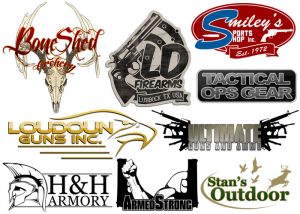Keeping Your Inbox Tidy
Email can be a great business tool but it can also be a real headache sometimes. Staying on top of email is definitely high on the e-commerce housekeeping list, but it is not without its fair share frustration. Not only is it tough to keep organized, but also keeping out the junk or “spam” can be maddening. Here are some tips to keep your mailbox organized, keep spam to a minimum, and manage storage space.
Spam:
Just to be clear, spam is any kind of email that you don’t want and did not sign up to receive. Most spam is harmless but sometimes it can be part of an identity theft scam or other types of fraud. Although spam is most commonly found in email, it can also come to text messages and even on social networking sites.
You can receive hundreds of spam messages for every legitimate message that arrives. With tools like box trapper as well as email filtering you can help reduce the amounts of spam in your inbox. Even with good filters, some of the spam makes it through. Also filters can sometimes hide messages that you really do want to receive, so watch out and be mindful when you are creating your rules. We offer a tool called “Spam Assassin” that we can setup for retailers with high spam, just give us a call and ask for it.
To set up filters, log in to your email account from the front end of your website. Here is a tutorial on how to login and set rules in your email:
1.Type your domain name into your URL (ex. “www.yourdomain.com”)
2.Add “/webmail” or “:2096” and hit “enter” on your keyboard (ex.”www.yourdomain.com/webmail”)
3.You may see a yellow warning screen, just choose the “Proceed Anyway” button
4.Type in your complete email address and correct password (case sensitive) and choose the orange “log in” button.
5. You will see the three different free viewing programs: Horde, Roundcube, and Squirrel-Mail.
6.Under the email server icons, go to “Email Filtering” in the bottom right corner.
7.Under “Create Filter” click the button “Create a New Filter”.
8.Set your rules by creating a unique name for this set of rules, then set the rules using the drop down menus, selecting types of messages you do not want to receive. You can add as many as you like using the “+”
NOTE: Use specific email addresses, keywords, and phrases that are specific to the spam you have been receiving.
9. Once you have made your selections, set your action for your rule with the drop down menu
10. Hit the “create” button to save your rule.
11. You can go back any time to edit your rules or set new ones.
Storage:
Make sure you either save or delete old emails. Many people are email hoarders and keep old emails so long that eventually they use up their storage space and are unable to send or receive mail. Staying within your quota is a lot easier said than done, but here are some pointers.
One thing you may not know is that it may not be the number of emails in your inbox but what is actually in your emails. Emails with big documents, pictures, and other data monsters will take up space in your email. We suggest that you either archive old emails or save pictures and documents onto your computer or even something like Dropbox instead of letting them sit in your email inbox.
Organizing your Inbox:
Some people like to create folders to keep their inbox organized, and you can find many ways on how to do it. We suggest finding categories that make sense for you and sticking to it.
Your Password:
As we have said before, having a strong and secure password is also essential to keep your inbox safe and secure. Keep hackers from getting into your account by making sure your password is “bulletproof”. Here are some suggestions that will help you create a strong password from microsoft.com.
If you have trouble remembering your passwords, you can use a secure password keeper like passpack.com.





